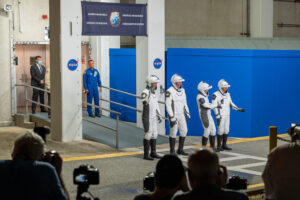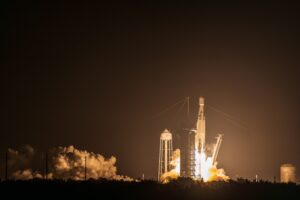"...from the highest of highs of a perfect launch... to a lowest low;
but what happened next...was pretty remarkable."

The Artemis Program has many facets. It’s not just a big orange rocket with astronauts strapped to the top headed towards the Moon. Artemis is a multi-national collaboration with multiple companies contributing to the complex architecture of expanding human presence from low Earth orbit into deep space. United Launch Alliance takes part in multiple ways, but for this mission, they are debuting their Vulcan rocket. And riding to space on top is Astrobotic’s Peregrine lunar lander.
Peregrine was host to over 20 payloads. NASA being a primary customer, had 5 payloads on board. These payloads were apart of the agencies Commercial Lunar Payload Services (CLPS). As with Commercial Crew and Commercial Resupply Services to the International Space Station (ISS), CLPS relies on commercial launch providers and/or spacecraft, to send things into space. This allows the agency and its partners a more cost-effective approach to scientific discovery and valuable research for future missions of the Artemis Program. Not to mention its contribution to the growing commercial space economy.
This growing economy also benefits other space agencies, countries, universities, companies and more. Opening space up to virtually anyone. For example, a company called Celestis sends memorial payloads into space. Their flight aboard Peregrine would bring encapsulated human remains (cremation, or DNA specimen) to the lunar surface.
Following launch and successful separation, Astrobotic and their Peregrine lander became the first US commercial lunar lander to operate in space. Peregrine carried a diverse suite of scientific instruments, technologies, mementos, and other payloads from seven different countries, dozens of science teams, and hundreds of individuals.

Credit: John Pisani for Cosmic Perspective
The payload section of this 61.6m (202ft) tall rocket. Encapsulated in this standard size payload faring is Astrobotic’s Lunar Lander.

Credit: John Pisani for Cosmic Perspective
Visiting Space Launch Complex 41 for remote camera placement.
Mission update from Astorbotic after launch:
“After successfully separating from United Launch Alliance’s Vulcan rocket, Astrobotic’s Peregrine lunar lander began receiving telemetry via the NASA Deep Space Network. Astrobotic-built avionics systems, including the primary command and data handling unit, as well as the thermal, propulsion, and power controllers, all powered on and performed as expected. After successful propulsion systems activation, Peregrine entered a fully operational state. Unfortunately, an anomaly occurred, which prevented Astrobotic from achieving a stable sun-pointing orientation. The team is responding in real time as the situation unfolds and will be providing updates as data is obtained and analyzed.”
Several updates would follow. Astrobotic was sending out mission updates daily, sometimes twice. The space community and broader public were all along for this ride! After the first couple of updates, I think most of us realized that we would not make it to the Moon. Peregrine would make it to lunar distance for the first phasing orbit, but because of a propellant leak, its trajectory was off and not fast enough to make it back around to Earth for a second phasing orbit where it would rendezvous with the Moon.
Final mission update from Astorbotic:
“This afternoon, Astrobotic received independent confirmation of Peregrine’s safe, controlled re-entry yesterday [January 18, 2024] over the South Pacific. Peregrine Mission One has concluded. We look to the future and our next mission to the Moon, Griffin Mission One. All of the hard-earned experience from the past 10 days in space along with the preceding years of designing, building, and testing Peregrine will directly inform Griffin and our future missions.”
This unfortunate end to what was still an exciting mission is a reminder that space is hard. A mission to the Moon is complex. Under CLPS, NASA and its partners can move quickly. If we can afford several missions, a slight risk of failure here and there is okay, as long as we can continually innovate and progress further. This approach is not too different from SpaceX’s strategy of rapid iteration and testing. And since humans are not flying, it’s okay to carry a little more risk, though the ultimate goal is always 100% mission success.
Throughout the entire 10 days and 13 hours, Astrobotic was incredibly transparent with the status of the mission. They had some tough decisions to make. And they had to make them quickly. They did what they could to make the best of the mission and because of that, all was not lost. Four of the five NASA payloads were able to be powered on and gathered important data in cis-lunar space.
- Linear Energy Transfer Spectrometer (LETS)
- Near-Infrared Volatile Spectrometer System (NIRVSS)
- Neutron Spectrometer System (NSS)
- Peregrine Ion-Trap Mass Spectrometer (PITMS)
- NASA’s LRA (Laser Retroreflector Array) instrument is a passive experiment, and operations could only take place on the lunar surface.
Forward thinking…
ULA and engine manufacturer, Blue Origin have, been working towards the debut of Vulcan for some time now, and with a flawless first flight and bullseye insertion, the wait may have been worth it. ULA has dozens of launches slated for Vulcan in the coming years. With at least a few more for 2024. Blue Origin will also be debuting their New Glenn rocket sometime in the second half of 2024. Astrobotic has another lunar lander mission slated later this year too, pending any findings from Peregrine 1. This mission will send NASA’s Volatiles Investigating Polar Exploration Rover (VIPER) to the lunar South Pole aboard the Griffin lander.
Final thoughts
On January 19, 2024 Astrobotic held a press conference with NASA participation where John Thornton, CEO, Astrobotic and others from Astrobotic as well as Joel Kearns, deputy associate administrator for Exploration, Science Mission Directorate, NASA Headquarters, were very candid and ultimately positive considering the fate of this mission. John Thornton spoke so highly of the Astrobotic team. He mentions some key moments of the mission including a pivotal point where a sole engineer was able to save what was left of the mission and teams had about thirty minutes to write new code to help Peregrine limp on a little longer. Ultimately, they uploaded that new code with four minutes left until a comms blackout period, thus prolonging the mission and preventing it from a un-controlled and catastrophic ending.
This sort of transparency and behind the scenes story telling is appreciated so much. It sheds light on scenarios that are often not spoken about. Most importantly, it ties the human element back to all of this. Built on Earth by humans. Space exploration is not possible without the ingenuity, cleverness and determination we possess. And when we work together, anything can be done. It was evident to me that Astrobotic is united more than ever and determined to be successful on the next flight. They have a strong leader that seems encouraging, insightful and able to draw positives from the most difficult of times. John Thornton would begin his remarks starting with the launch experience and how they discovered there was an anomaly, but what he described after that, was nothing short of incredible.
“when we were coming from the highest high of a perfect launch and came down to a lowest low when we foundout that the spacecraft no longer had the helium and no longer had the propulsion needed to to attempt a moon landing… that was certainly a tough moment for all of us, but what happened next I think was pretty remarkable and inspiring…”
Visiting Space Launch Complex 41 & Kennedy Space Center
Credit: John Pisani for Cosmic Perspective
Visiting the pad for remote camera setup and then a view from the Press Site lawn.
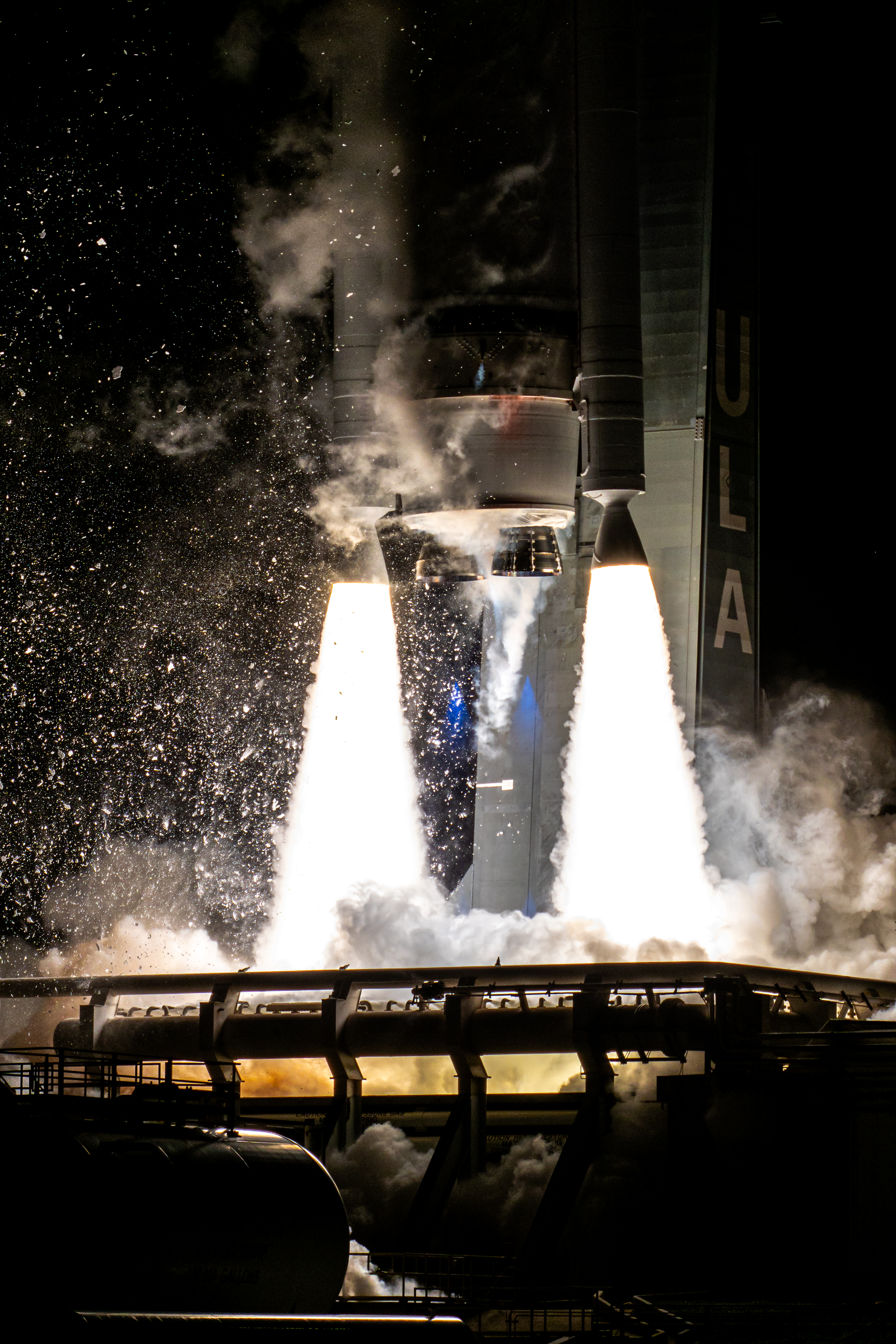
Credit: John Pisani for Cosmic Perspective
Up close at the business end of this rocket. Northrop Grumman Graphite Epoxy Motor (GEM) 63XL Solid Rocket Boosters (SRBs) and the debut pair of Blue Origin’s BE-4 methalox engines. Remote cameras provided an up-close perspective of liftoff at Space Launch Complex-41 (SLC-41). The dramatic lighting changes and the plume that quickly engulfs the launch complex always provide an intense sequence of shots.
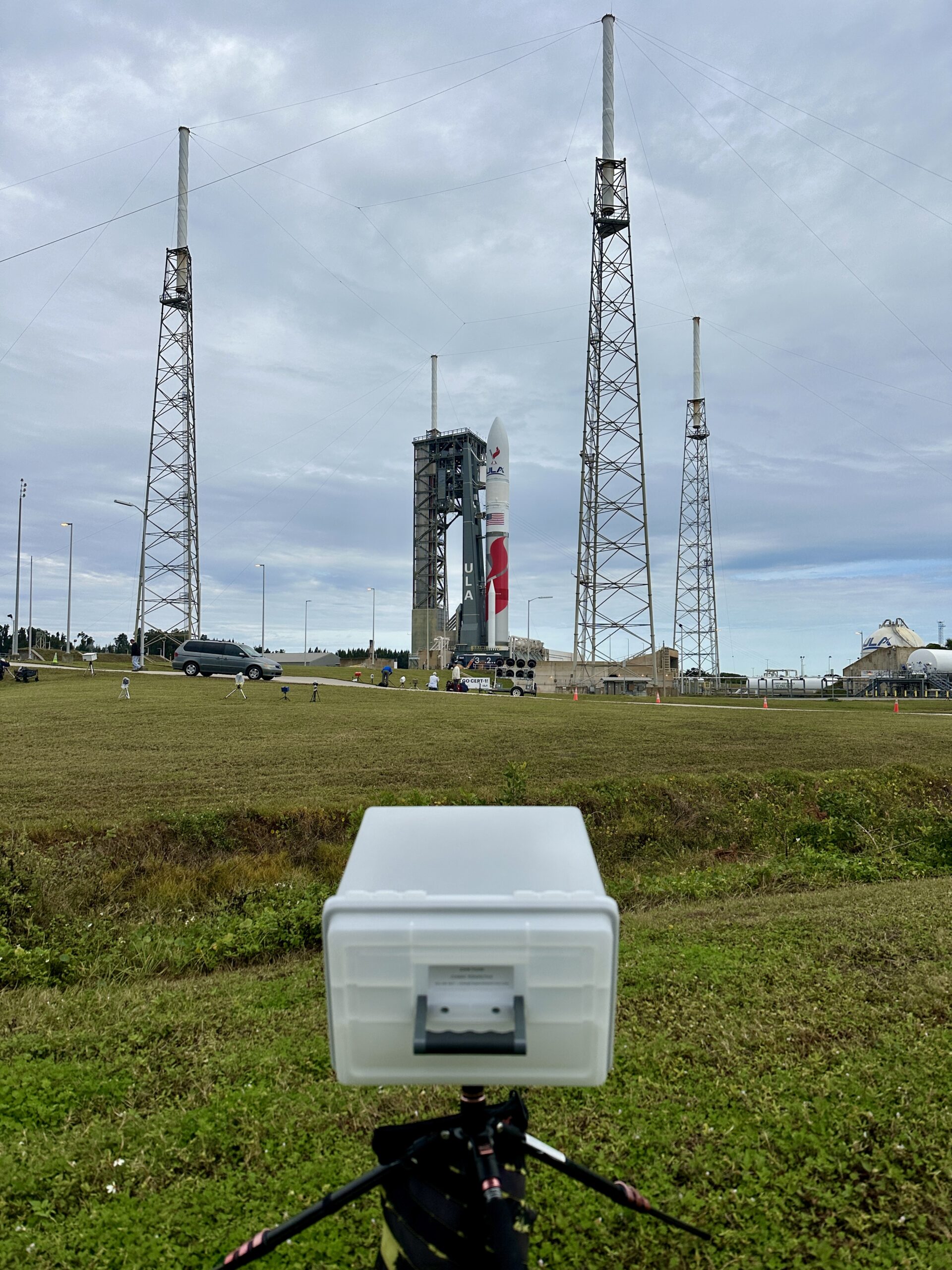
Credit: John Pisani for Cosmic Perspective
Southwest side of the launch complex. Wide shot (first image in article captured here.)
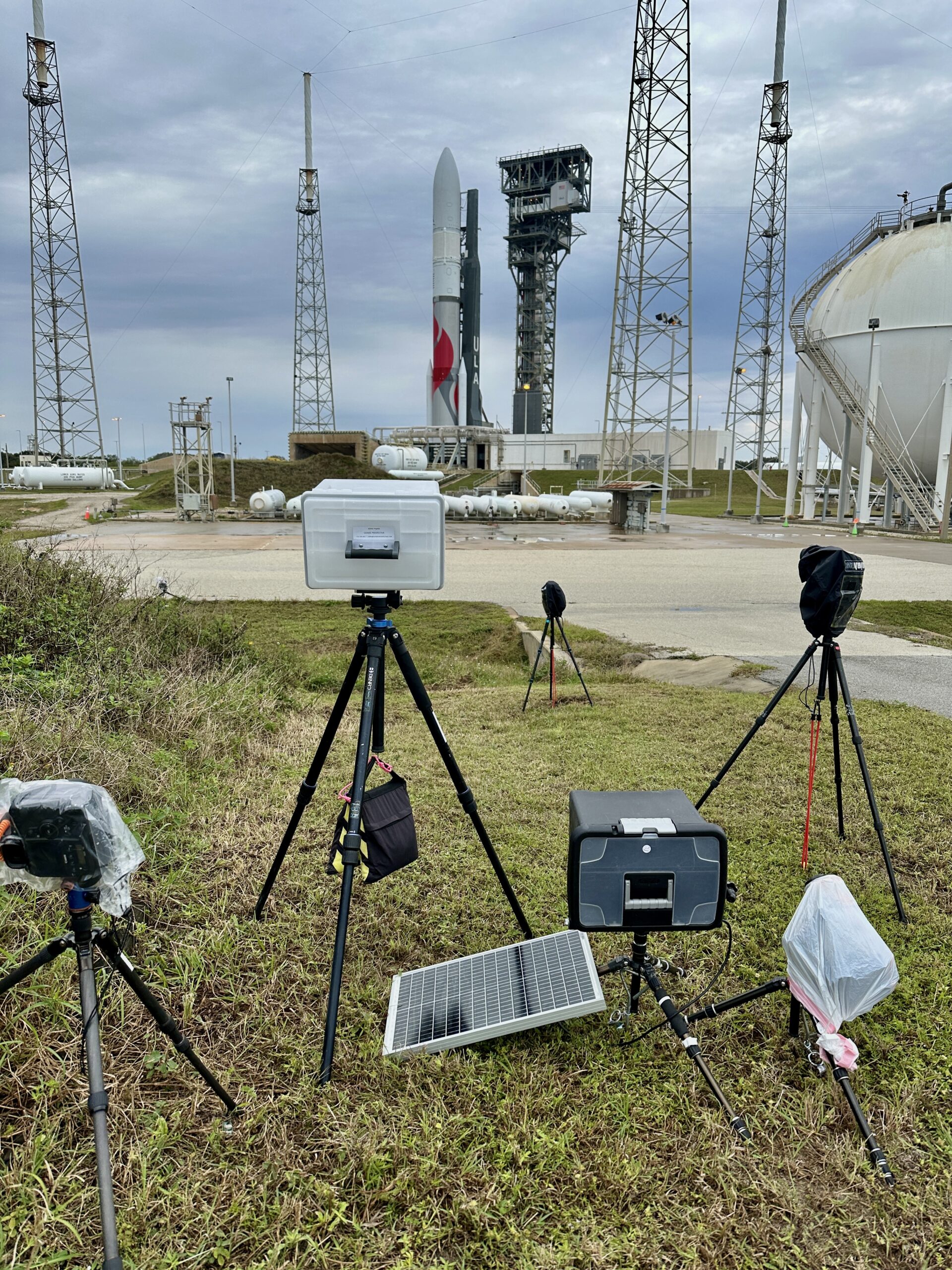
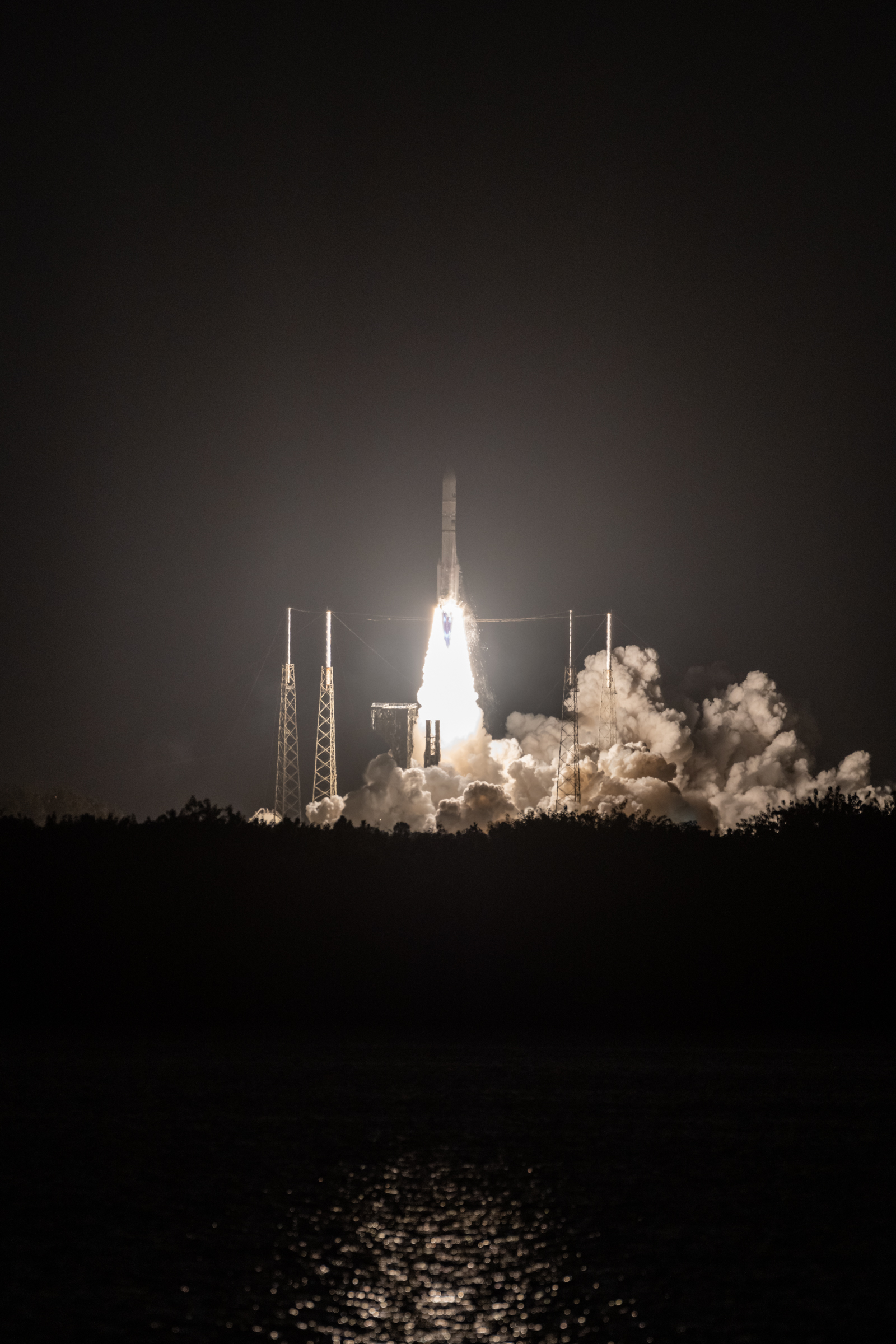
Credit: John Pisani for Cosmic Perspective
Telephoto shot of Vulcan clearing the tower at SLC-41. From across the waters of the Turn Basin a modest focal length will capture a remarkable image. If you compose appropriately, you can get a nice reflection off of the water.
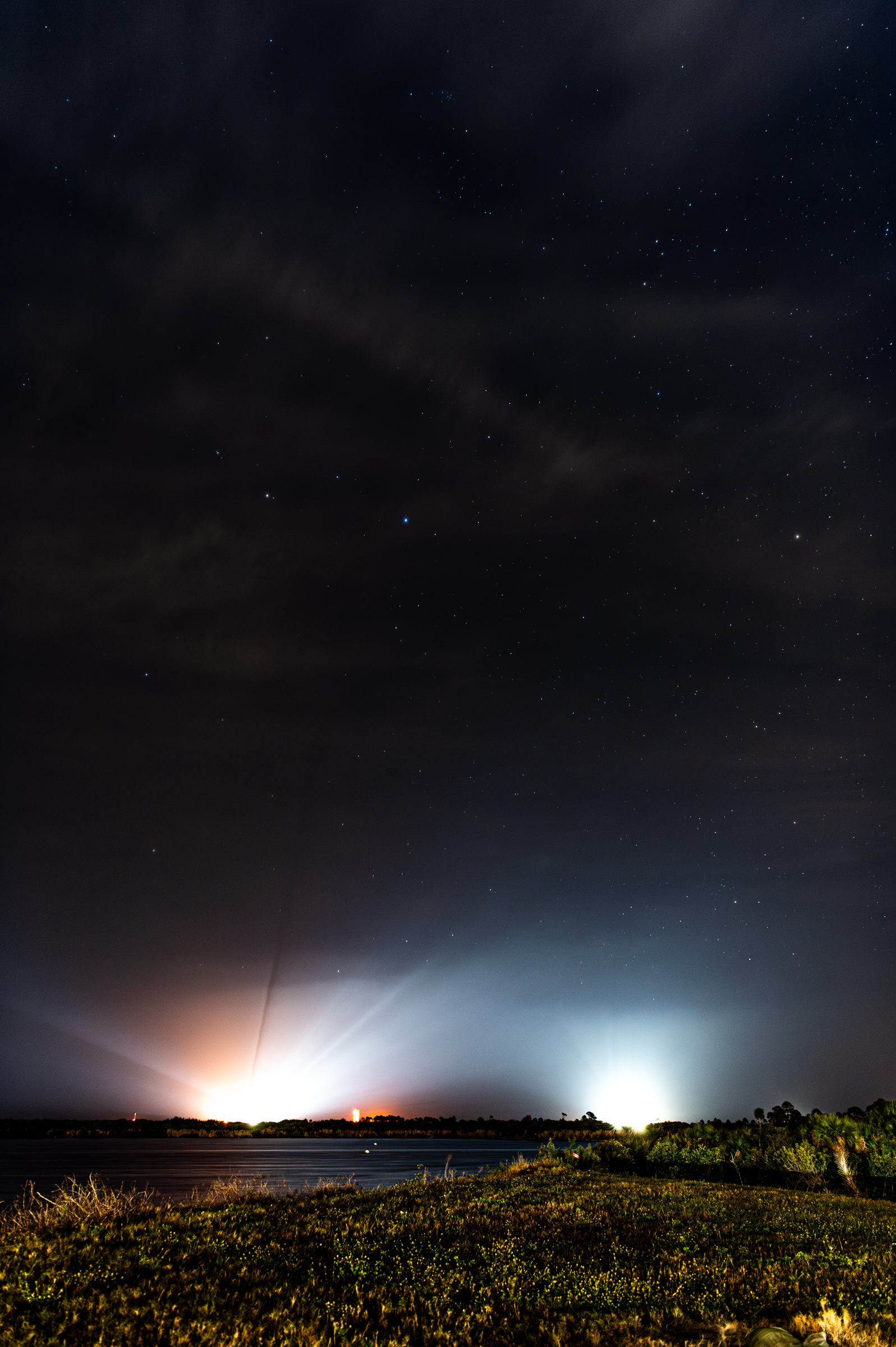

Credit: John Pisani for Cosmic Perspective
Streak from the lawn. Notice the change to blue. That’s where the SRB’s stopped providing propulsion and it was just the BE-4’s powering the rocket the rest of the way up hill.
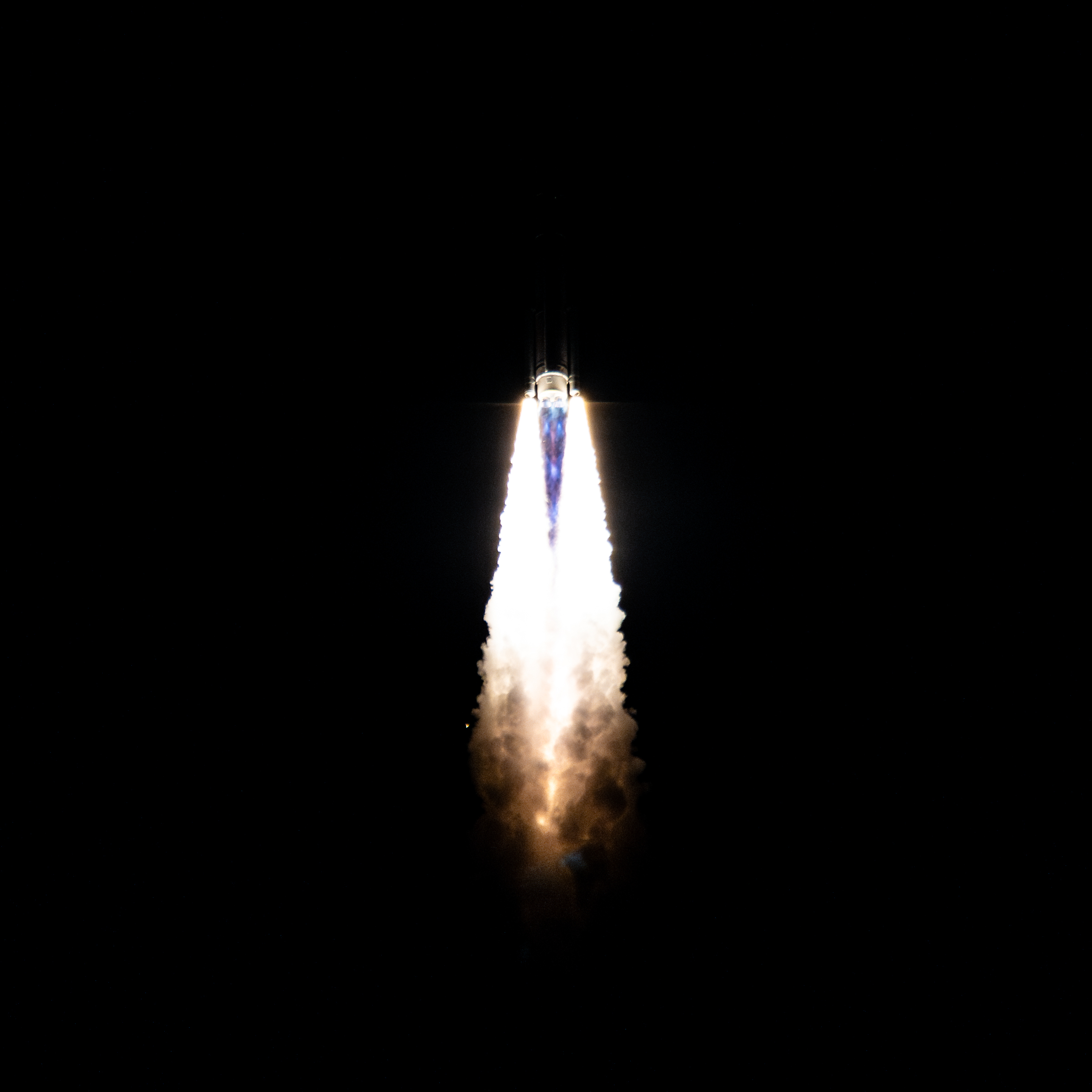
Credit: John Pisani for Cosmic Perspective.
Close-crop of ascent.

